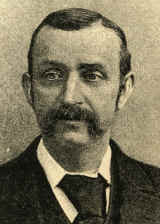Water polo
Team sport played in water
Water polo is a competitive team sport played in water between two teams of seven players each. The game consists of four quarters in which the teams attempt to score goals by throwing the ball into the opposing team's goal. The team with the most goals at the end of the game wins the match.
History[edit | edit source]
Water polo originated in the late 19th century as a form of rugby football played in rivers and lakes in England and Scotland. The sport has evolved significantly since its inception, with the first official rules being established in the 1880s. Water polo was introduced to the Olympic Games at the 1900 Summer Olympics in Paris, making it one of the oldest team sports in the Olympic program.
Gameplay[edit | edit source]
The game is played in a pool that is 30 meters long and 20 meters wide for men, and 25 meters long and 20 meters wide for women. Each team consists of six field players and one goalkeeper. The objective is to score by getting the ball into the opposing team's goal, which is 3 meters wide and 0.9 meters high.
Positions[edit | edit source]
- Goalkeeper: The primary role is to prevent the opposing team from scoring.
- Center forward: Positioned near the opponent's goal to score.
- Center back: Defends against the opposing center forward.
- Wings: Positioned on the sides of the pool to create scoring opportunities.
- Drivers: Players who drive towards the goal to create scoring chances.
Rules[edit | edit source]
- The game starts with a swim-off, where players race to the ball in the center of the pool.
- Players can only use one hand to handle the ball, except for the goalkeeper.
- A goal is scored when the entire ball passes the goal line.
- Exclusion fouls result in a player being temporarily excluded from the game for 20 seconds.
Competitions[edit | edit source]
Water polo is played at various levels, from local club competitions to international tournaments. Major competitions include:
Notable Players[edit | edit source]
Some of the most notable water polo players include:
- Dezső Gyarmati: A Hungarian player considered one of the greatest in the sport.
- Terry Schroeder: An American player and coach who has significantly contributed to the sport.
Governing Bodies[edit | edit source]
The sport is governed internationally by the Fédération Internationale de Natation (FINA). Each country has its own governing body, such as USA Water Polo in the United States and British Swimming in the United Kingdom.
See Also[edit | edit source]
References[edit | edit source]
External Links[edit | edit source]
This water polo related article is a stub.
Search WikiMD
Ad.Tired of being Overweight? Try W8MD's NYC physician weight loss.
Semaglutide (Ozempic / Wegovy and Tirzepatide (Mounjaro / Zepbound) available. Call 718 946 5500.
Advertise on WikiMD
|
WikiMD's Wellness Encyclopedia |
| Let Food Be Thy Medicine Medicine Thy Food - Hippocrates |
Translate this page: - East Asian
中文,
日本,
한국어,
South Asian
हिन्दी,
தமிழ்,
తెలుగు,
Urdu,
ಕನ್ನಡ,
Southeast Asian
Indonesian,
Vietnamese,
Thai,
မြန်မာဘာသာ,
বাংলা
European
español,
Deutsch,
français,
Greek,
português do Brasil,
polski,
română,
русский,
Nederlands,
norsk,
svenska,
suomi,
Italian
Middle Eastern & African
عربى,
Turkish,
Persian,
Hebrew,
Afrikaans,
isiZulu,
Kiswahili,
Other
Bulgarian,
Hungarian,
Czech,
Swedish,
മലയാളം,
मराठी,
ਪੰਜਾਬੀ,
ગુજરાતી,
Portuguese,
Ukrainian
Medical Disclaimer: WikiMD is not a substitute for professional medical advice. The information on WikiMD is provided as an information resource only, may be incorrect, outdated or misleading, and is not to be used or relied on for any diagnostic or treatment purposes. Please consult your health care provider before making any healthcare decisions or for guidance about a specific medical condition. WikiMD expressly disclaims responsibility, and shall have no liability, for any damages, loss, injury, or liability whatsoever suffered as a result of your reliance on the information contained in this site. By visiting this site you agree to the foregoing terms and conditions, which may from time to time be changed or supplemented by WikiMD. If you do not agree to the foregoing terms and conditions, you should not enter or use this site. See full disclaimer.
Credits:Most images are courtesy of Wikimedia commons, and templates, categories Wikipedia, licensed under CC BY SA or similar.
Contributors: Prab R. Tumpati, MD





